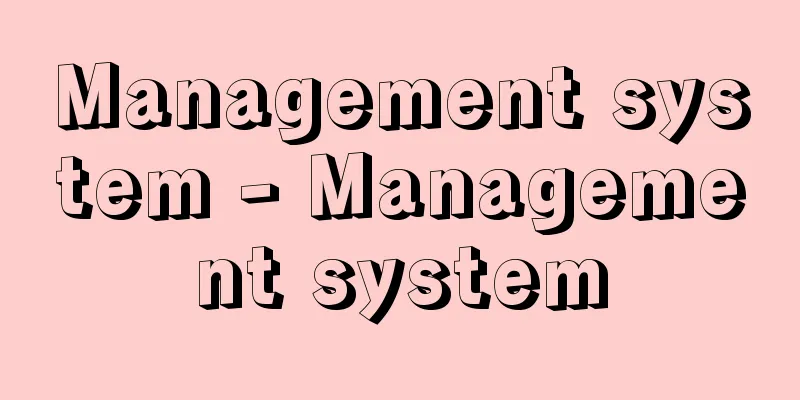Dining out coupons

|
During and after the Second World War, meal tickets were issued by local government offices to people who ate out for their staple food. In 1941 (Showa 16), due to the tight food situation, the rice passbook system was implemented in six major cities, and the rice meal coupon system was also incorporated into this system. People who ate rice at work or elsewhere would present this meal coupon to their workplace, which would then receive rice rations. However, as the supply and demand situation worsened, it became necessary to significantly restrict staple foods for business use at restaurants and inns, and the traveler's meal coupon system was implemented. In the narrow sense, meal coupons often refer to these traveler's meal coupons. Eating out coupon restaurants were designated, and no staple foods were rationed at other restaurants. Eating out for staple food would be done by presenting a rice passbook, receiving a meal coupon, which would then be handed to the eating out coupon restaurant to eat rice. However, as food conditions worsened from just before the end of the war until after the war, restaurant vendors selling fewer staple foods were often crowded. These coupons were also often traded at black market prices, with one coupon selling for 10 yen per meal in 1947 (Showa 22), when the cost of a bath was 2 yen. However, from around 1950, food conditions improved, and the number of restaurant vendors dropped sharply. As restaurants began to sell staple foods, the coupon system became meaningless, and was abolished in 1969. [Kaji Tatsuo] Source: Shogakukan Encyclopedia Nipponica About Encyclopedia Nipponica Information | Legend |
|
第二次世界大戦中から戦後にかけて、主食を外食とする者のために地区役所より交付された食券。1941年(昭和16)食糧事情の逼迫(ひっぱく)から六大都市では米穀通帳制が実施され、この制度のなかに、米飯外食券の制度も組み入れられた。職場などで米飯食をとる者は、この食券を職場に差し出すことで、職場が米穀の配給を受ける仕組みであった。しかし需給状況のいっそうの悪化に伴って、食堂、旅館などの業務用主食にも大幅な制限が必要となり、旅行者用外食券制度が実施されるようになった。狭義には外食券は、この旅行者用外食券をいうことが多い。外食券食堂が指定されて、これ以外の飲食店では主食はいっさい配給されないことになった。主食外食者は米穀通帳を提示して、外食券の交付を受け、これを外食券食堂に渡して、米飯類を食す仕組みである。しかし、終戦直前から戦後にかけての食糧事情悪化のなかでは、外食券食堂の主食販売量も少なく、店は大混雑を示す光景がみられた。またこの外食券は闇値(やみね)で取引されることも多くなり、1947年(昭和22)入浴料が2円の当時、1食1枚分の闇値が10円だったという例もある。しかし50年ごろより食糧事情が好転、外食券利用者は激減し、飲食店が事実上主食類を販売するようになってからは形骸(けいがい)化して、69年には廃止された。 [梶 龍雄] 出典 小学館 日本大百科全書(ニッポニカ)日本大百科全書(ニッポニカ)について 情報 | 凡例 |
Recommend
Aesculus
...A deciduous tree of the Aesculaceae family wit...
Lien - Right of retention (English spelling) Zurückbehaltungsrecht
If a person in possession of another person's ...
Triatoma
...The larvae overwinter in groups on the trunks ...
Kajiya tree frog - Kajiya tree frog
...Many tree frogs lay eggs in small puddles. In ...
Space Diversity
…In contrast, the normal reception method is call...
Samau'al b.'Ādiyā (English spelling) SamaualbAdiya
...It is generally said that there were no castle...
Spores - Gahou
A highly durable, special cell structure that some...
Bottle - Heishi
In ancient times, it was read as "heiji"...
Aloe - Aloe
A perennial succulent plant of the lily family (A...
Oxford India Papers
...A printing tissue paper used for Bibles, dicti...
Dry fields - Kanden
Paddy fields are classified as dry, semi-damp, or...
Sodalite - Soda-raito (English spelling) sodalite
Also called sodalite. A mineral of the sodalite gr...
Ryuo [town] - Ryuo
A former town in Nakakoma District, central Yamana...
Amalfi (English spelling)
A port town on the north shore of the Gulf of Sale...
Chalcosoma caucasus (English spelling) Chalcosomacaucasus
… [Chokane Hayashi]. … *Some of the terminology t...









